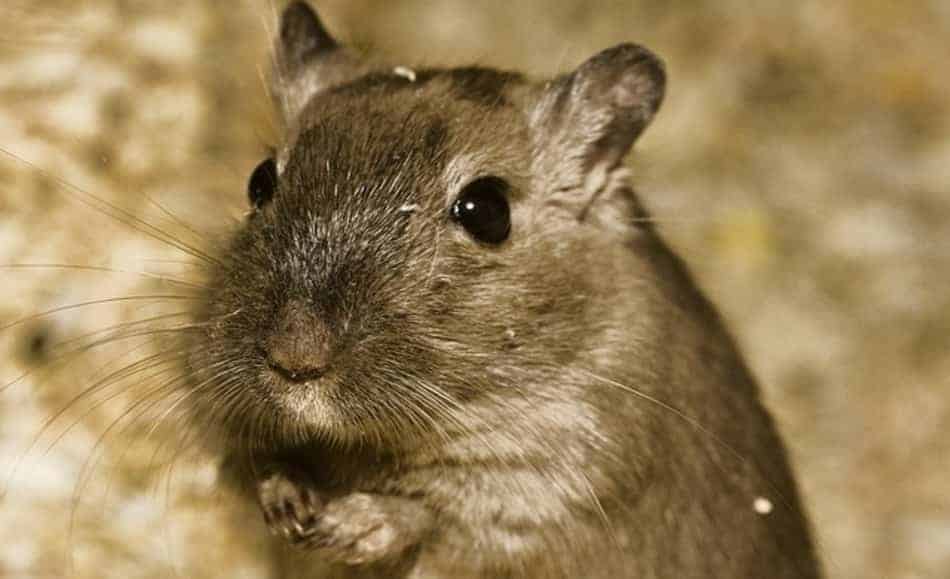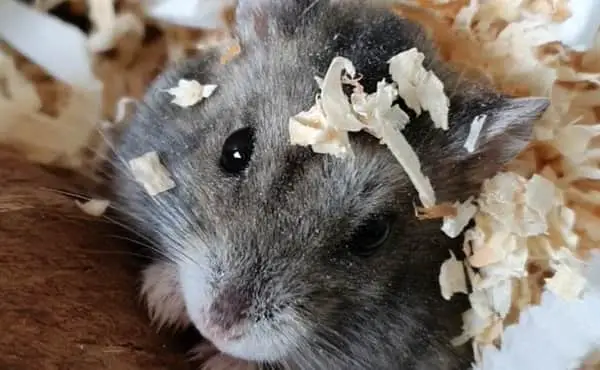One thing every hamster owner needs to be prepared for when they bring a hammy home is lots of poop. Hamsters seem to poop everywhere, especially when they are new pets in unfamiliar surroundings. Understanding the reasons behind your hamster’s choice to poop in inconvenient places can help you deal with the issue practically and patiently.
So, why does my hamster poop in his ball? In many cases, it’s a result of poor timing. Such as putting your hamster straight in the ball after waking it up, for instance. It could also be a result of fear or stress. Finally, it could simply be that your hamster can’t hold it.
This article will take a closer look at these reasons and provide a few easy strategies you can implement to reduce the amount of poop that ends up in your hamster’s ball. We’ll differentiate between normal pooping and pooping related to stress or fear and discuss whether hamsters can be trained to use a litter box.
Your Hamster Can’t Help It
The first reason your hamster likely poops in his ball is that he can’t really control his bowels—not like people, dogs, and cats can. Although some will choose one corner of the cage to be their toilet or use a litter box most of the time, they also tend to go whenever they need to, wherever they are—especially if they’re not in their cage or near their litter box.
Speedy Digestion
Hamsters, like many other tiny rodents, have a very fast digestive system. Although studies specifically on hamsters are unavailable, the entire digestive process, which for humans takes from two to five days, happens in about six hours for mice.
Hamsters tend to eat at least every two hours, and they may nibble on treats in between meals. This is why it can sometimes seem like these little guys are always either eating or pooping.
How to Use This Info
Since hamsters need to eat and go so frequently, it would be both impractical and cruel to withhold food before putting your hamster in its ball to keep him from pooping there. However, you can put this knowledge to use in other ways.
For example, you can choose to put hammy in his ball soon after you’ve seen him use his preferred corner or litter box. This will at least decrease the likelihood that your hamster will urinate in the ball—which is far messier than if he just poops there.
You can also be careful not to leave your hamster in the ball for too long. 10 to 20 minutes is plenty of time for him to spend there, and he shouldn’t need to go too often during that time period—especially if he goes before leaving the cage.
Your Hamster Just Woke Up
If you put your hammy straight in his ball after waking him from his daily snooze, he will likely need to poop almost immediately. For this reason, it can be helpful to know your hamster’s sleep patterns and give him a few minutes to run around and relieve himself before you put him in the ball.
Sleep/Poop Patterns
Although it varies between individuals, and older hamsters who will begin to require more sleep, most hamsters sleep for 6 to 8 hours a day. They are either nocturnal or crepuscular, meaning they are most active at night or at dawn and dusk.
Some hamsters will adjust their sleeping pattern to fit their interactions with you, but you should try to avoid waking your hamster at odd times during the day just because you want to play with him.
Hamsters need a certain amount of uninterrupted sleep to maintain their health and good nature. A hamster that’s been suddenly awakened and just wants to go back to bed is also more likely to just poop or pee wherever.
How to Use This Info
Instead of waking him during the day to spend time in his ball, get your hamster out when you see that he’s already up and about or wake him in the evening or early morning when he’s more naturally inclined to be awake anyway.
As we’ve mentioned above, some hamsters are pickier about where they poop and pee than others. If your hamster prefers to use a specific corner or at least tries to keep his sleeping area clean, you will likely see him go soon after he emerges from his nest after waking. Always give him a chance to do this before moving him to his ball.
Your Hamster is Frightened
Many animals respond to fear by emptying their bowels, and hamsters are no exception. If your hamster poops or pees every time you pick him up or immediately after you put him in the ball, it may be a fear response. Especially if they are unused to being handled, being picked up and plopped somewhere unfamiliar can be a very stressful experience for them.
Other Signs of Fear
If you are unsure whether your hamster is pooping out of fear, look for other signs that he is fearful or uncomfortable. Does he run away when you try to pick him up? How does he behave once he’s in the ball? Some other signs of fear or stress include:
- Freezing
- Hiding
- Lying on his back and shows his teeth
- Chattering teeth
- Biting, nipping, or scratching
Even if they are accustomed to being picked up and handled, some hamsters never learn to enjoy a ball. Others become stressed from too much time away from their cage. If your hamster continues to show signs of stress or fear, tries to escape the ball, or refuses to run in it, you may need to take things a little slower or even stop trying to put him in the ball.
How to Use This Info
A hamster that is pooping in the ball because he is frightened—either from being picked up or by the ball itself—needs more time to get accustomed to what is going on. Try getting him out more often for shorter periods of time.
Offer treats and give him a chance to climb into your hand or the ball of his own accord. Never roll the ball around while he is inside or leave him in the ball for longer than he seems comfortable with—never longer than 10 to 20 minutes.
Make sure the ball you’re using is big enough for your hamster. One that is too small will not only stress him out and make him uncomfortable, it could also injure his back. If he continues to show signs of fear or stress when he’s placed in the ball, consider allowing him to run around in a playpen on the floor or some other safe area instead.
Dealing With Poop in the Ball
Cleaning up after your hamster is actually an important element of decreasing the likelihood that he will continue to poop in his ball. The poop of a healthy hamster should be easy to clean up. It should be small and hard. If your hamster’s poop is soft and spreads all over the ball, you may be dealing with a health or diet issue.
Litter Box Training
A hamster that is potty trained will prefer to do his business in the litter box, making it less likely that he will poop in his ball. The best way to get your hamster to poop and pee in a litter box is to place a bit of his soiled litter in the box and keep the rest of the cage as clean as possible. Eventually, he will get the idea that this is where he is supposed to go.
If your hamster is potty trained, you’ll just need to make sure you give him a chance to use the litter box before placing him in his ball and don’t leave him in the ball for too long.
Cleaning the Ball
Conversely, keeping the ball super clean can discourage your hamster from using it as a litter box. A hamster that smells his own pee or poop in a ball may feel that it’s okay to go there again. Always clean the ball thoroughly after your hamster has had an accident in it, washing it in soapy water and rinsing it until no soap residue remains.
Conclusion
Hamsters’ bodies work in such a way that they need to poop frequently, so you’ll never be able to completely stop your hamster from going in his ball. You can make this less of an issue, however, by following a few simple routines.
Always give your hamster a chance to wake up and do his business before you place him in the ball. Make sure he is not frightened or uncomfortable with being put in the ball. Keep the ball squeaky clean and encourage your hamster to use a litter box. Finally, never leave your hamster in a ball for longer than 10 to 20 minutes.





